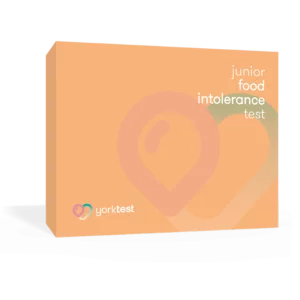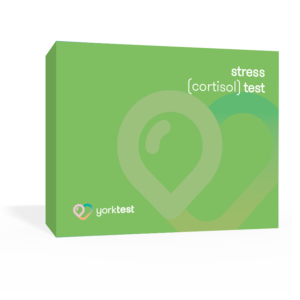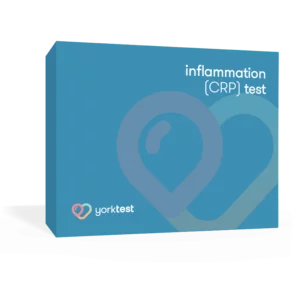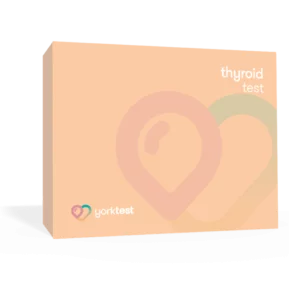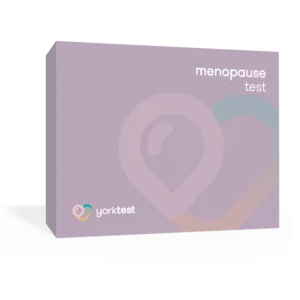

By Christine Bailey – MSc PGCE CNHC
Author of My Kids Can’t Eat That: How to Deal with Allergies & Intolerance in Childen – August 2018 Nourish Books


Food reactions can vary tremendously. A true food allergy known as an IgE reaction is often immediate and, in many cases, requires immediate medical attention.
If you suspect that your child has an allergy of this kind, they must be seen by a GP or Allergy Specialist as soon as possible.
There are also other types of food reactions that can be more difficult to identify.
Food sensitivities may or may not involve the immune system. In some cases where the immune system is involved this leads to the production of immunoglobulins other than IgE, such as IgG antibodies.
Food intolerance tests, like the award-winning Junior Food Intolerance Test offered by YorkTest, test the levels of these IgG antibodies in your child’s blood and can pinpoint their personal trigger foods. This means you can quickly work out your child’s food sensitivities.
How common is food sensitivity?
It is estimated that up to 45 percent of people may suffer with food sensitivities, somewhat more than IgE-mediated food allergies (which is estimated at 2%), but unlike allergies, they are often difficult to identify. Here are some key differences:
- Reactions relating to a food sensitivity tend to be delayed, in some cases taking between one and two days to appear.
- Symptoms are varied, and may affect many different body systems, but they are not normally life-threatening.
- Reactions can be linked to other conditions, such as eczema, asthma, arthritis, headaches, ear infections, sinusitis and urticaria.
- Any food is a potential culprit for a food sensitivity – often, common everyday foods eaten in large quantities are most likely to trigger a reaction.
Non-coeliac gluten sensitivity is one common example of a food sensitivity and is usually what people mean when they say they are reacting to gluten (but not suffering from coeliac disease).
The terms ‘Food intolerance’ and ‘Food Sensitivities’ are sometimes used interchangeably. Strictly speaking they are different but this depends who you talk to.
Food intolerances are often described as not involving the immune system. For example, lactose intolerance is probably the most common type but others such as fructose intolerance and intolerance to sulphites and MSG are other examples. YorkTest do not test for these.
If your child has been diagnosed with a food intolerance, you’ll probably have achieved that diagnosis by working through an elimination diet, although lactose and fructose intolerance can be diagnosed via a breath test.
A child develops a food intolerance when something in a food irritates his or her digestive system or when he or she is unable to properly digest – or break down – the food. As these reactions involve the digestive system many of the symptoms are linked to gut health.
What are the main symptoms of a food sensitivity?
The list of symptoms associated with food sensitivity is long and varied, making it very hard to diagnose, especially when reactions are slow to emerge. If your child suffers from a combination of any of the following, frequently and in particular after eating certain foods, food sensitivity could be the problem.
- Allergic rhinitis, sinus problems, and repeated infections in the ears and throat
- Anxiety, irritability
- Asthma
- Bed-wetting
- Constipation
- Eczema and other skin reactions
- Headaches
- Hyperactivity and behavioural problems
- Fatigue and sleep problems
- IBS symptoms, tummy pain
- Joint pain
In all cases, you should always seek advice from a medical practitioner, so they can examine your child’s symptoms.
Once your doctor has ruled out any serious underlying conditions, following a YorkTest Junior Food Intolerance Test could help you to identify any foods or drinks in your child’s diet that is causing an IgG reaction.
YorkTest’s programmes are used by parents to inform a fast track elimination diet, which is supported by BANT registered nutritional therapists.
What’s the best way to eliminate foods from my child’s diet?
Cooking meals from scratch is the easiest way to ensure the food you and your child eat is free from the known allergens affecting your child. This is particularly critical, of course, if they suffer from a food allergy.
If different family members are eating different foods then avoiding cross contamination is important (this is when traces of food are left on preparation and cooking equipment). Here are 6 tips to help you succeed:
- Always prepare the free-from foods first, ideally up to the point that they are ready for cooking.
- Do make sure you keep the chopping boards, utensils and cutlery you’re using for the allergy-free recipe separate, and make sure they have been thoroughly washed
- Use separate baking trays, dishes, pans and so on for free-from foods.
- Use separate shelves in the oven for free-from and culprit foods, placing free-from foods above anything else (this ensures that if there’s any dripping or spilling during cooking, there’s no chance of contamination from above).
- When you’re baking or grilling, use baking parchment to cover oven trays and racks before you cook – you can throw these away after cooking and replace with fresh next time.
- Use a separate toaster for gluten-free breads or use toaster bags in shared toasters and sandwich machines.
Can my child recover from a food sensitivity?
Very often, children experience more than one food sensitivity at a time, which can indicate general underlying digestive and immune-system imbalance.
Once identified, these culprit foods in your child’s diet should be eliminated for between three and six months. During this time, you’ll need to take positive steps to rebalance your child’s immune system and provide a diet that helps to heal the digestive tract and improve gut health.
After this period, if your child’s symptoms have improved, and if your doctor and nutritionist agree, you can start to reintroduce culprit foods one by one and monitor your child for any reactions.
Bear in mind, though, that even if your child appears not to react to a food he or she was once sensitive to, you should avoid the temptation to offer it in large amounts. It is better to keep rotating it in the diet, to reduce the likelihood of that particular food becoming a problem again.
Where can I find alternative meal ideas for children with a food sensitivity?
Never underestimate the resources around you – whether they are the meal plans and recipes in my book and on my website or the ideas and tips you’ll find on allergy-related social media groups and allergy websites and forums.
Planning your weekly meals is more important for families with children with food reactions than it is for anyone else. Planning what you’re cooking and eating every day will help you to avoid risks and temptations while you’re out shopping and ensure you have everything you need at the end of the shop.
You’ll save money, not only by being less susceptible to temptation as you wander around the store, but because cooking free-from meals from scratch, rather than relying on potentially expensive shop-bought free-from products, is generally cheaper.
What’s the best way to shop for a child with a food sensitivity?
Read the food labels
Once you are aware of your child’s food reactions, becoming savvy with reading food labels needs to become second nature. In the UK and Europe, food manufacturers must, by law, clearly highlight in bold, underline, large font, or colour the 14 major allergens, if they appear in the ingredients of any particular product.
Sometimes front-of-pack statements make claims for the food as “free from†certain allergens (for example, foods may be labelled “gluten free†and so on). Although helpful, these statements are entirely voluntary, so I advise that you always check the ingredients list, too. Never stop checking labels and don’t make assumptions. Remember that product specifications often change, so keep vigilant.
Consider the nutritional value
It is also worth mentioning that just because a product is labelled as suitable for those with particular food allergies, it does not mean it is healthy for your child. Many free-from products are often highly refined and nutrient poor and can upset a child’s blood-sugar levels.
While prepared foods, such as free-from breads, can be useful, I would encourage you to make things from scratch as often as you can – that way you can take full control of not only the allergy-free aspects of your child’s diet, but his or her nutritional intake, too.
Keep it Fresh
Shopping for food-sensitive children does not have to be complicated or expensive. The key is to focus on whole, unprocessed real foods and to shop in the free-from product aisle only when you really have to. Focus on fresh fruit and vegetables with lean proteins and some healthy fats – with this in mind, you’ll have a naturally free-from diet packed with nutrients but without the expense.
For a Dairy Free Child
If your child reacts to animal milks, he or she will need to avoid all dairy, including lactose-free dairy products. This is because the reaction is to milk protein, not to milk sugar. Look out for labels that highlight milk or cow’s milk – some may also highlight butter, cream and yogurt – and avoid those products.
Remember that milk from goat, sheep and buffalo may also be problematic for a child who is allergic to dairy, because these milks contain similar proteins to those in cow’s milk. Ingredients such as whey, casein, caseinate, lactalbumin and lactose also indicate that the food contains dairy. If the product is labelled vegan, you know it will be dairy free.
Look for plant-based milk products that have been fortified with calcium, vitamin D and vitamin B12. Children under four-and-a-half years old are not advised to have rice drinks as a replacement for cow’s milk. Note that the nutritional quality of plant-based milks varies considerably. Seek support from a nutritionist or dietician for advice
Shopping Egg Free
A reaction to egg could mean that your child is allergic to proteins in the egg white, the yolk, or both. Because it’s the make-up of the egg itself that’s usually the problem, dieticians will generally advise that those allergic to eggs steer clear of all eggs, whatever the source. That means that your child should probably avoid eating not just chicken eggs, but duck, goose and quail eggs, for example, too.
Remember that egg is often used in products to bind, thicken or flavour them, or to provide additional protein. On labels, egg is often given other names: yolk, egg white, albumin, globulin, lecithin E322, ovomucoid, ovovitellin, livetin are all ingredients to look out for (and under UK and EU law must be highlighted in some way). In my book I show you what you can use to replace eggs in recipes, including those that involve baking
Shopping for your Wheat / Gluten free Child
Grains such as wheat, barley, rye, spelt and kamut all contain gluten. Furthermore, because of the ways in which foods are packaged and processed, oats are often cross-contaminated with gluten, so it’s important to choose gluten-free oats, too. If your child reacts to wheat, rather than gluten, he or she should be able to tolerate barley and rye.
All the recipes in my book are gluten-free but do check ingredient labels as some less obvious products may contain gluten. For example, not all baking powders are gluten-free. There are now a vast array of gluten free flours and products available but aim to focus on those gluten free grains or alternative that are nutrient dense and a good source of fibre
Which allergens are identified on UK and European packaging, by law?
- Celery (including celeriac)
- Cereals containing gluten (wheat, barley, rye, oats, spelt, kamut)
- Crustacea (such as crabs, crayfish, lobster and prawns)
- Egg
- Fish
- Lupin
- Milk (including lactose)
- Molluscs (such as cockles, mussels and oysters)
- Mustard
- Peanuts
- Sesame
- Soy beans
- Sulphur dioxide and sulphites
- Tree nuts (almond, Brazil nut, cashew, hazelnut, pecan, pistachio, macadamia nut, walnut)
Facebook
Google+
Twitter
LinkedIn



